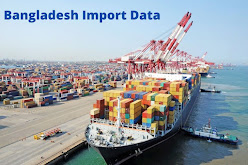A Detail about Bangladesh Customs Import Data

Trade data plays a significant part in settling on essential choices. Here we will provide its customers the critical experiences about worldwide business sectors to settle on better business choices and procedures be it as far as costs, volumes, exchange stream, patterns over the long haul, or admittance to more buyers and organizations. Our report says to associate with merchants, exporters, strategic organizations and accomplices, makers, and brokers the whole way across the world. Bangladesh Customs Data is gathered and arranged dependent on Bill of section and shipping charge archives submitted with customs. Trade data catches every single item moves all through Bangladesh through any method of Transport (Sea, Air, Road and so forth) Our Bangladesh Import Data comprise of significant data like Importer, exporter , Product , Price amount which encourages you to dissect development of your item in the global market. The Republic of Bangladesh is in South Asia. The riverine country
